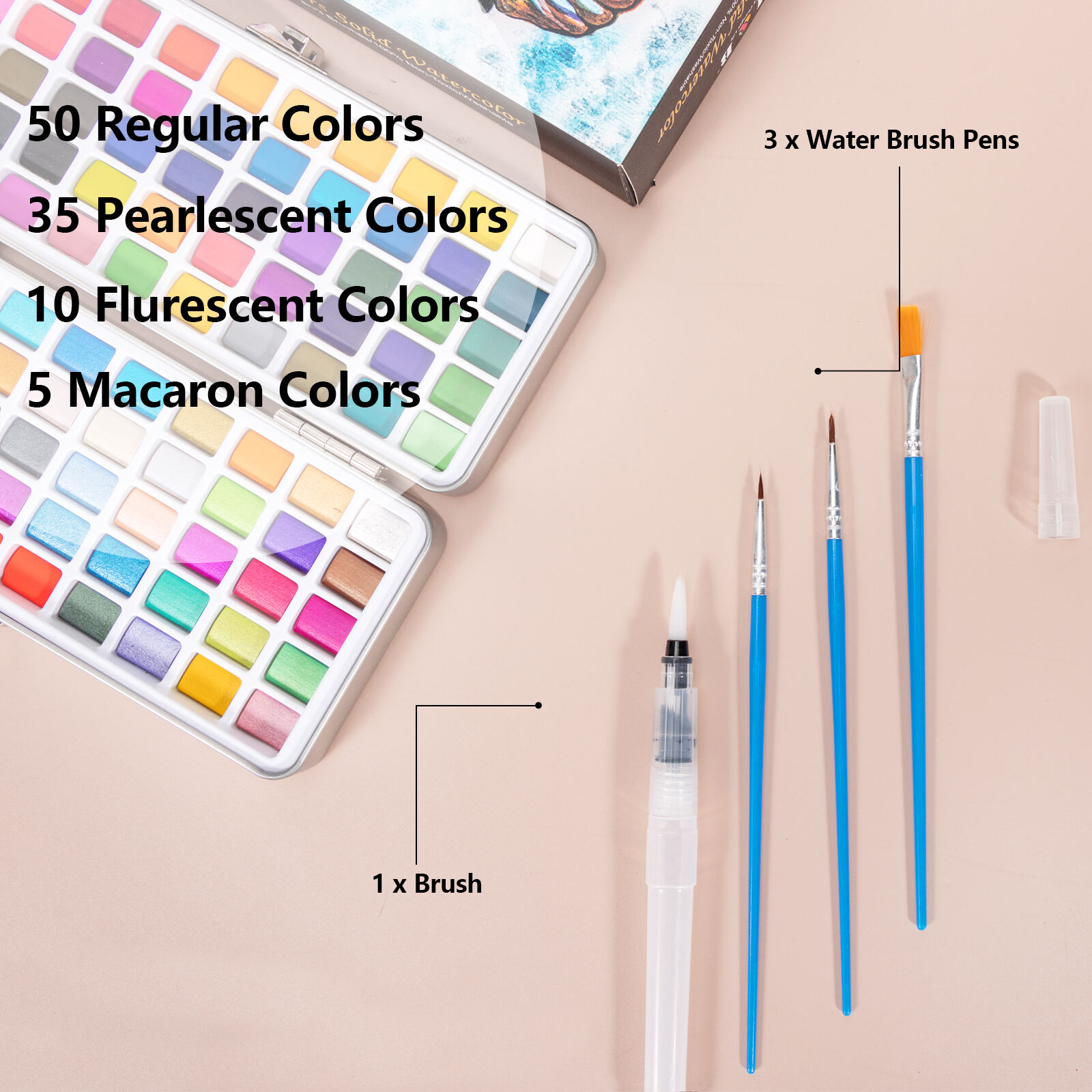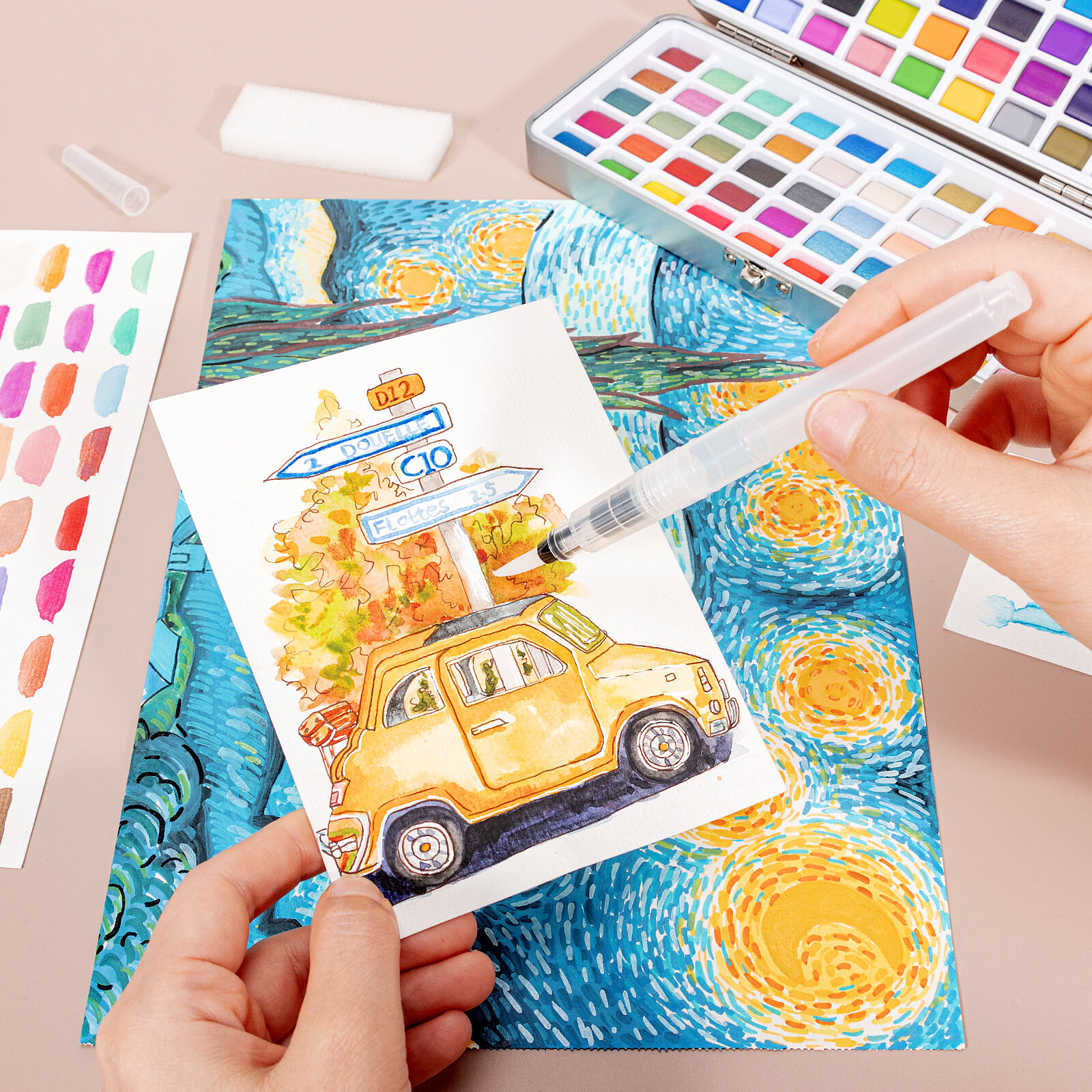The Foundation of Exceptional Watercolour Art
Choosing the right watercolour paper is a critical decision that shapes the outcome of every brushstroke. Whether you are a beginner exploring your artistic voice or a seasoned professional refining your technique, quality watercolour paper can elevate your entire creative process. The surface you work on determines how pigment behaves, how layers build, and how your final piece will age over time. Investing in the right watercolour paper sets a strong foundation for both experimentation and mastery.
Paper Weight and Thickness
Impact on absorbency and durability
One of the first features to consider in watercolour paper is its weight. Heavier paper, such as 300 gsm (140 lb) or more, is less likely to warp when wet and can handle multiple washes without buckling. Lighter paper might be more economical, but it typically requires stretching or extra care to prevent distortion. Quality watercolour paper with proper weight supports fluid application and offers greater resistance to tearing or pilling during layering.
Influence on technique versatility
Different techniques require different responses from the surface. Thicker watercolour paper allows for heavy washes, wet-on-wet techniques, and textural effects without deterioration. Artists who employ multiple techniques in a single piece benefit from the adaptability of a heavier, well-made paper that can take various forms of moisture and manipulation.
Surface Texture Options
Hot press for fine detail
Hot press watercolour paper has a smooth, even surface that is ideal for detailed work and fine lines. Artists who focus on illustration, botanical studies, or calligraphic elements often prefer this texture. The smoothness allows brushes or pens to glide effortlessly, which supports accuracy and precision.
Cold press and rough for expressive marks
Cold press watercolour paper features a moderate texture that balances absorbency with brush control. It is the most versatile type and is widely favored for general use. Rough paper, on the other hand, has a pronounced texture that enhances granulation and creates striking expressive effects. Both are excellent choices for artists who value fluidity, texture, and spontaneity in their work.
Composition and Material Quality
Cotton-based for archival performance
The best watercolour paper is made from 100% cotton fibers. Cotton provides superior strength, absorbency, and longevity, making it the top choice for professional artists. Cotton watercolour paper handles repeated washes and lifting techniques more gracefully than wood pulp alternatives. Its resistance to yellowing and deterioration ensures that artworks maintain their quality over time.
Wood pulp alternatives for practice and affordability
While cotton paper is ideal for final works, wood pulp watercolour paper offers a more economical option for practice and experimentation. These papers can still perform well, especially when acid-free and sized properly. Artists should choose based on their goals—whether creating archival pieces or practicing technique development.

Sizing Techniques and Their Effects
Internal and external sizing explained
Watercolour paper is treated with sizing agents to control how water and pigment interact with the surface. Internal sizing is applied during manufacturing and penetrates the fibers, while external sizing coats the surface. High-quality watercolour paper often combines both methods, creating a balance between absorbency and control. This combination helps maintain sharp edges in washes and prevents colors from becoming dull or spreading too unpredictably.
Importance in lifting and reworking
Properly sized watercolour paper allows artists to lift pigment or make corrections without damaging the surface. This flexibility is crucial for techniques like glazing, lifting highlights, or softening edges. Poorly sized paper may become fragile or over-absorbent, limiting creative freedom and risking paper damage during adjustments.
Edge and Sheet Format Choices
Blocks, sheets, and pads for different workflows
Watercolour paper is available in blocks, individual sheets, and spiral-bound pads. Blocks keep the edges sealed, preventing warping during painting. Loose sheets offer customization in size and trimming, while pads are portable and ideal for fieldwork. Choosing the right format can streamline your workflow and make the creative process more efficient.
Deckle edges for traditional appeal
Some premium watercolour paper features natural deckle edges, adding a handmade, artisanal touch to artworks. These edges are often favored by artists who exhibit or sell original works without framing. Beyond aesthetics, deckle-edged watercolour paper represents craftsmanship and quality in both manufacturing and presentation.
Color Tone and Surface Finish
Bright white for vibrant color
Watercolour paper comes in a range of shades, from natural white to bright white. Bright white paper enhances the contrast and luminosity of pigments, making colors pop. It is especially useful when working with transparent washes or light-filled scenes. However, artists should ensure that brightness is achieved without the use of optical brighteners, which can fade over time.
Natural tones for subtle expression
Natural white or cream-toned watercolour paper offers a softer, warmer backdrop for subtle palettes and moody compositions. This type of paper is ideal for atmospheric pieces, monochromatic studies, or works intended to evoke vintage or classical themes. Choosing the right tone can enhance the emotional impact of your painting.
Archival Qualities and Longevity
Acid-free and pH neutral properties
For artists creating works meant to last, archival quality is a must. Watercolour paper that is acid-free and pH neutral resists degradation, discoloration, and brittleness. This ensures the artwork remains intact and visually consistent over time, even when displayed or stored in varying conditions.
Resistance to mold and mildew
High-quality watercolour paper is less prone to mold growth, especially when stored properly. The manufacturing process often includes treatments that discourage organic growth, protecting the work from damage. Proper storage combined with good-quality watercolour paper safeguards your art investment long-term.
Compatibility with Techniques and Tools
Supports mixed media exploration
Some watercolour paper is specially formulated to accommodate mixed media approaches. Artists may combine watercolour with ink, graphite, colored pencil, or even light acrylics. The surface needs to balance absorbency and texture to handle multiple mediums without breaking down. Mixed media-compatible watercolour paper opens up new creative opportunities.
Ideal for layering and rewetting
Artists often rely on layering techniques to build depth and luminosity in watercolour paintings. Quality watercolour paper allows for multiple layers without feathering or bleeding. It also supports rewetting areas to blend, correct, or lift pigment. These features are essential for dynamic and detailed compositions.
Eco-Friendly and Ethical Considerations
Sustainable sourcing practices
Environmentally conscious artists may seek out watercolour paper made from sustainably sourced cotton or pulp. Brands that use renewable resources and practice ethical manufacturing contribute to a healthier planet. Checking for certifications like FSC or similar sustainability marks can help identify responsible products.
Recyclable packaging and reduced waste
In addition to paper quality, packaging matters. Watercolour paper packaged with minimal plastic, recyclable materials, or bulk options helps reduce studio waste. Choosing brands that prioritize eco-friendly practices aligns artistic creation with environmental stewardship.
Trusted Brands and Certifications
Importance of consistent quality control
When selecting watercolour paper, artists should look for brands known for consistency and transparency. Reliable manufacturers perform strict quality control to ensure uniform texture, sizing, and durability across batches. This predictability is vital when working on series or commissions.
Look for professional-grade labeling
Labels such as "professional quality," "archival," or "100% cotton" often indicate high-grade watercolour paper. Certifications from independent bodies or artist endorsements can also offer reassurance. However, testing small quantities yourself remains one of the best ways to determine what suits your personal style.
Frequently Asked Questions
What is the best weight for watercolour paper?
A weight of 300 gsm (140 lb) or higher is generally preferred for its ability to handle wet techniques without warping or tearing.
Should I always use 100% cotton watercolour paper?
Not necessarily. While cotton watercolour paper offers superior quality, wood pulp alternatives can be suitable for practice, sketching, or budget-conscious projects.
Can I use both sides of watercolour paper?
Yes, though one side is usually more heavily sized and textured. The reverse can be used, especially for practice or light washes, but results may differ.
Does watercolour paper expire or degrade over time?
High-quality, acid-free watercolour paper stored in proper conditions will last for decades. However, exposure to moisture, light, and contaminants can shorten its lifespan.
Table of Contents
- The Foundation of Exceptional Watercolour Art
- Paper Weight and Thickness
- Surface Texture Options
- Composition and Material Quality
- Sizing Techniques and Their Effects
- Edge and Sheet Format Choices
- Color Tone and Surface Finish
- Archival Qualities and Longevity
- Compatibility with Techniques and Tools
- Eco-Friendly and Ethical Considerations
- Trusted Brands and Certifications
- Frequently Asked Questions


